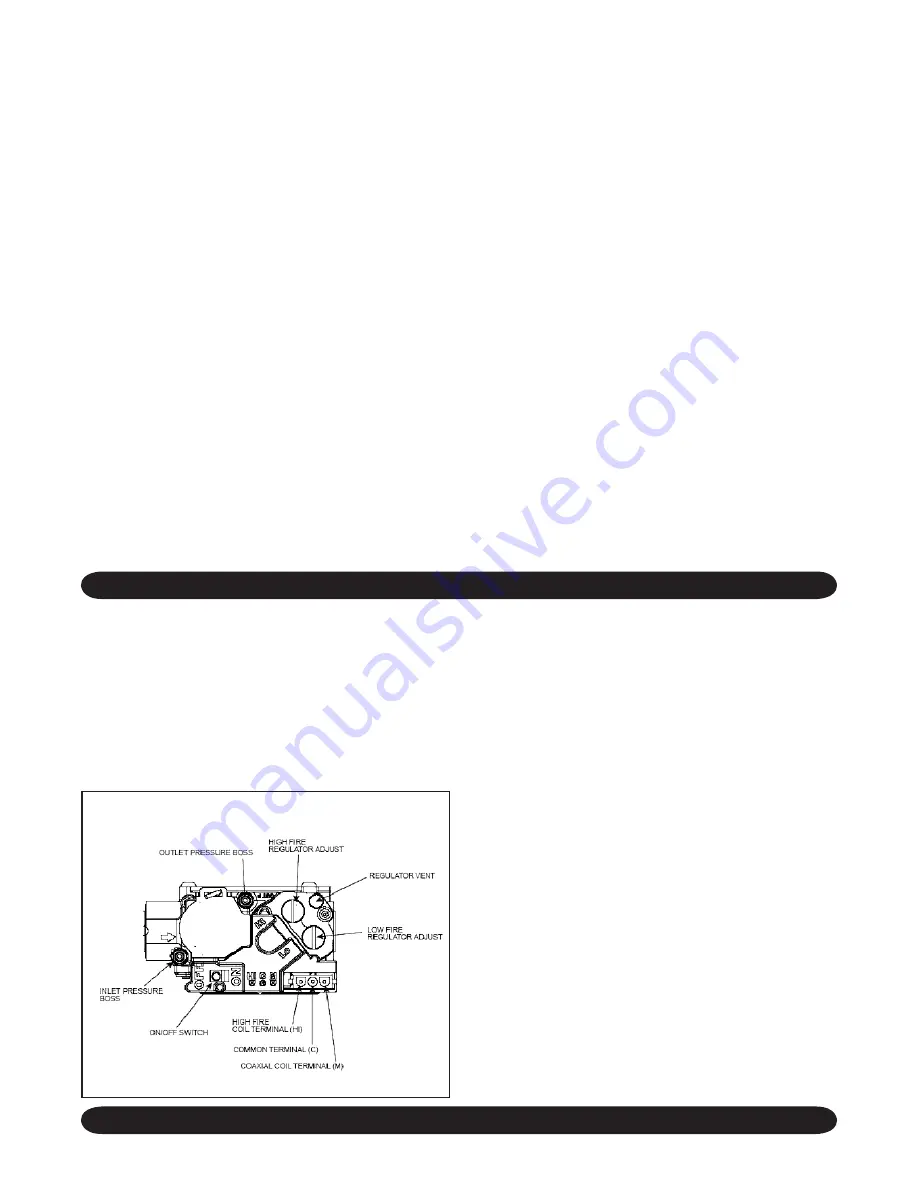
4
materials to come into contact with the furnace.
5. Any additions, alterations or conversions re-
quired in order for the furnace to properly match the
application requirements must be done by a quali-
fi ed installation contractor, service agency or gas
supplier, using factory specifi ed or approved parts.
6. Familiarize yourself with the location of the fur-
nace gas manual shut-off valve and any electrical
switches, fuse or circuit breaker associated with
the furnace.
7. Should over-heating occur, or if the gas valve
fails to shut off the burners, shut off the gas supply
with the furnace manual shut-off valve, then shut
off the electrical supply to the furnace. In the case
of the latter, call a qualifi ed installation contractor,
service contractor, or gas supplier.
8. If the furnace has been subjected to fl ood condi-
tions, i.e., if any part of the furnace has been under
water, call a qualifi ed installer, service agency or
gas supplier for a complete inspection. Electronic
controls and gas train components may become
unstable and unreliable. The furnace must not be
used until the furnace has been checked, and any
affected parts have been replaced.
9. Do not allow snow, ice or debris to accumulate
around the outdoor furnace exhaust and combus-
tion air intake terminals. Blockage of the exhaust
or combustion intake terminals can result in inad-
equate performance or nuisance shut-downs.
10. Familiarize yourself with the location of your
furnace fi lter or fi lters. A blocked air fi lter will reduce
effi ciency, increase fuel consumption, raise the fur-
nace operating temperature, and shorten the life of
furnace components.
11. Do not cover return air grills and supply air reg-
isters with drapes, curtains, throw rugs, etc.
12. Avoid shutting off supply air registers in the
interests of saving heat. While there is some va-
lidity to this practice with space heating, there is
little to be gained in central heating systems. The
furnace requires a quantity of air passing over the
heat exchanger to operate within design tempera-
tures. Reducing the number of supply air registers
available for air delivery may have the unforeseen
consequence of raising the furnace operating tem-
perature, reducing furnace effi ciency, and shorten-
ing the life of the furnace components.
3 - FURNACE OPERATION INFORMATION
During the heating season, the operation of the fur-
nace is fully automatic.
TO START THE FURNACE:
1. First read these instructions and safety no-
tices thoroughly.
2. Set the thermostat to the lowest setting.
3. Ensure that all supply air registers and return
air grilles are open.
4. Turn off the electric power to the furnace.
5. Remove the burner access door.
6. Ensure that the appliance manual shut-off
valve is in the “ON” position. The valve handle is
normally in-line with the gas pipe and valve body
when it is in the “ON” position; perpendicular to
the gas piping and valve body when it is in the
“OFF” position.
7. Turn the manual gas control switch to the
“OFF” position.
(Figure 3)
8. Wait 5 minutes to clear out any gas. If, after
this time you smell gas, STOP. Turn the appli-
ance manual shut-off valve to the “OFF” posi-
tion. If burning propane or other LP gas, smell
for gas near the fl oor since propane and butane
are both heavier than air. If after this time you do
not smell gas, continue to the next step.
FIGURE 3 - WHITE-RODGERS 36G54 GAS VALVE

























